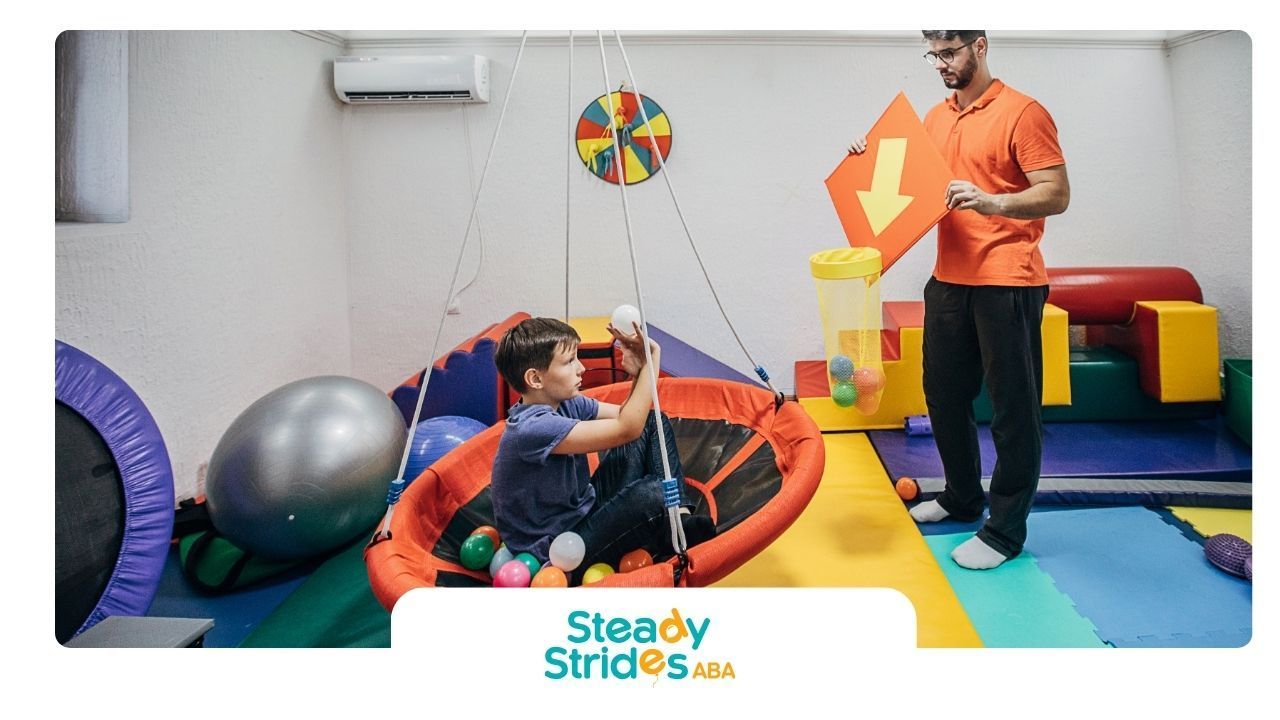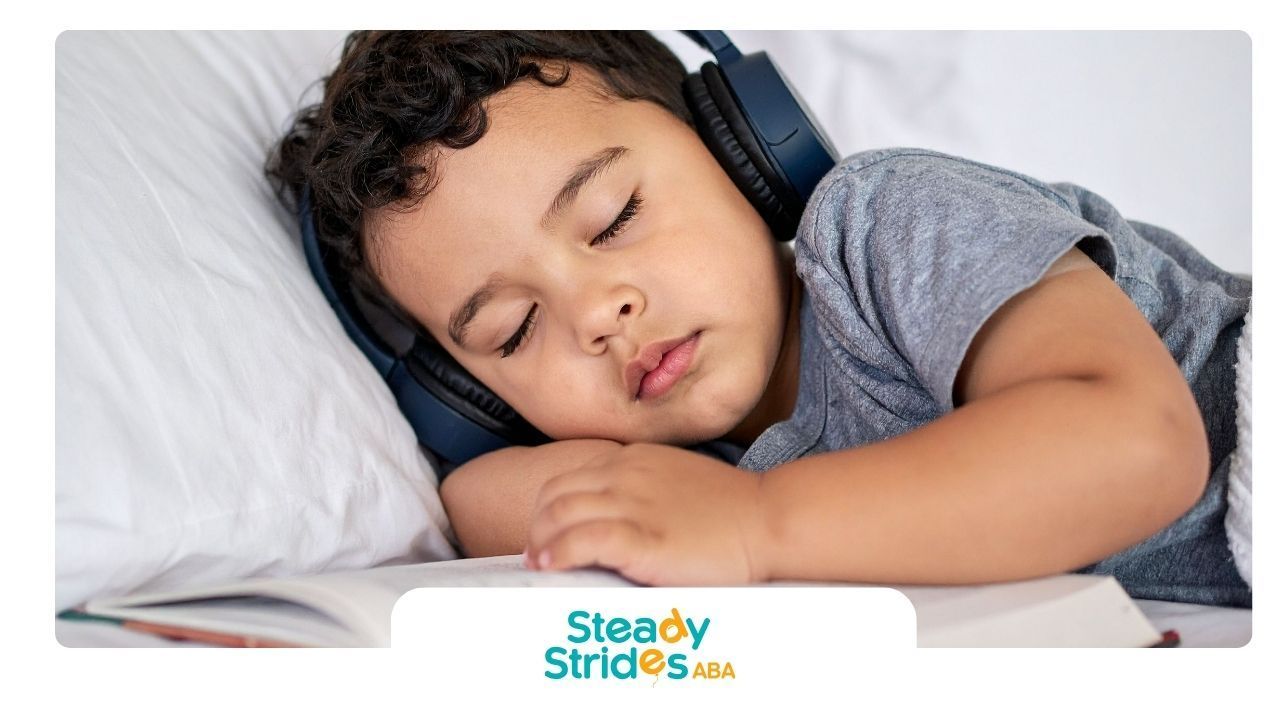Key Highlights
- ABA therapy provides practical strategies for enhancing positive behavior and acquiring new skills in the home environment.
- Parents can use techniques like positive reinforcement and consistent routines to support their child’s development effectively.
- The use of visual supports and structured environments simplifies communication and improves daily interactions.
- Practicing token economies and modeling behaviors helps children with autism spectrum disorder reach their full potential.
- Daily ABA therapy strategies empower children and families by integrating therapy into natural settings.
The journey through autism services can feel overwhelming. With so many therapy options, appointments, and opinions, it’s hard to know where to start—or how to make real progress between sessions.
If you’re feeling that way, you’re not alone. And more importantly—you’re not powerless.
ABA therapy, when practiced consistently, is one of the most effective tools available to help children build communication, emotional regulation, and independence. But many families don’t realize that some of the best outcomes come from reinforcing those techniques at home, in the rhythm of daily life.
In this blog, we’ll explore practical ways to integrate ABA into your child’s home environment—without adding stress to your routine. You’ll learn how to create structure, use reinforcement effectively, manage behavior, and support your child’s growth in a way that’s natural and sustainable.
Whether you’re in Dallas, Houston, Austin, or a small Texas town—these strategies are for you. Let’s turn everyday challenges into learning opportunities, together.
Benefits of ABA at Home
ABA techniques aren’t just for therapy centers—they work especially well in familiar settings like the home, where children feel most comfortable. Here’s why:
- Emotional security: A child’s home is where they feel safest, which helps reduce anxiety and increase participation.
- Real-world practice: Children learn life skills in the context they’ll actually use them—getting ready in the morning, helping with meals, or playing with siblings.
- Parental confidence: When parents apply ABA strategies, they’re more equipped to support their child without relying entirely on professionals.
- Faster generalization: Skills learned at home are more likely to carry over into other environments like school, daycare, or social situations.
- Improved behavior patterns: When ABA becomes a natural part of daily routines, children begin to understand expectations and feel more in control.
Setting Up Your Home for ABA Success
Create a Supportive Environment
One of the most powerful ways to bring ABA into your home is to shape the physical and emotional environment. A structured setting helps your child know what’s expected and reduces sensory or emotional overload.
Start by identifying where your child spends the most time. Organize these spaces with:
- Clear labels for toys, clothes, and supplies.
- Visual reminders like checklists or picture cards.
- Quiet zones for calming down when overwhelmed.
For example, a corner with a visual schedule and a bin of preferred calming tools (fidget toys, headphones, a soft blanket) can be a “safe space” for self-regulation. The goal is to make the home predictable, not rigid—so your child feels supported, not restricted.
Design Daily Routines That Work
Routine is essential for children, especially those with autism. Knowing what comes next reduces anxiety and makes transitions smoother.
Break the day into simple, repeatable patterns:
- Morning: Wake up, dress, breakfast, brush teeth
- Afternoon: Lunch, quiet time, outdoor play, snack
- Evening: Dinner, bath, bedtime story, sleep
Use timers or verbal cues to signal transitions. For example, “In five minutes, we’ll clean up and start lunch.” This gives your child time to prepare for the next activity.
When routines are consistent, your child doesn’t have to guess or resist—they just follow the flow. This structure becomes a comforting rhythm that supports learning and emotional control.
Using Visual Supports and Schedules
Why Visuals Matter
Children with autism often process information more effectively through images than words. Visual supports reduce reliance on verbal instruction and help children understand, anticipate, and complete tasks independently.
Types of visual supports include:
- Picture schedules showing morning or bedtime routines.
- First-Then boards, e.g., “First homework, then play.”
- Task cards breaking a chore into steps: pick up toys → put in bin → close lid.
Visuals promote self-direction. Instead of waiting for prompts, children can check the schedule and move on to the next task. This independence is empowering—and reduces the need for constant supervision.
How to Use Them at Home
Start simple. Use images or icons your child already understands. Print a daily schedule and post it where they can see it—like on the fridge or bedroom wall.
Introduce the schedule by walking through it together. Say, “Let’s check what’s next.”
As your child completes steps, let them mark them off with stickers or Velcro cards.
Gradually, you can make schedules more detailed or use them for specific situations like brushing teeth or preparing for a doctor visit.
As your child becomes more confident, visual supports can be reduced or used only during transitions or challenging times.
Core ABA Techniques for Everyday Life
Natural Environment Teaching (NET)
Natural Environment Teaching uses real-life moments to teach valuable skills. Rather than sitting down for a “lesson,” you embed learning into activities your child already enjoys.
For example:
- During snack time, ask your child to request “juice” instead of reaching.
- While playing with blocks, model turn-taking and sharing.
- When cooking, label ingredients and count aloud to build language and math skills.
NET makes learning feel less like a task and more like play. It also increases the chances that your child will use their skills in spontaneous situations—not just when prompted.
Positive Reinforcement Strategies
Reinforcement means giving something positive right after a desired behavior, which increases the chance the behavior will happen again.
Effective reinforcers can include:
- Verbal praise: “Nice job waiting your turn!”
- Physical rewards: Stickers, a favorite snack, or screen time.
- Activity-based rewards: 10 extra minutes outside or choosing the next activity.
Use reinforcement immediately after the behavior and be specific. “I like how you
cleaned up your toys all by yourself!” is more powerful than a generic “good job.”
Track what motivates your child—it might change over time. Keep reinforcers exciting, but not overly difficult to earn. The goal is steady encouragement and a sense of accomplishment.
Modeling and Prompting
Children learn best by watching and doing. Modeling means demonstrating the right behavior, and prompting means giving gentle support to help them succeed.
Here’s how to apply both:
- Model: Say “hello” to a neighbor so your child sees it in action.
- Prompt: Gently nudge your child to wave or repeat the word.
Prompts can be:
- Physical (guiding their hand)
- Verbal (“Say ‘bye-bye’”)
- Gestural (pointing or nodding)
- Visual (using a cue card)
The idea is to help your child succeed, then gradually reduce prompts so they can do it independently. Always celebrate attempts—even if the behavior isn’t perfect.
Managing Challenging Behaviors at Home
Understanding the Triggers
Behavior is a form of communication. When a child has a tantrum, refuses to follow directions, or becomes aggressive, it’s usually because they’re trying to express something—frustration, fear, or a need they can’t verbalize.
Using ABA, you can identify:
- Antecedents: What happened right before the behavior?
- Behaviors: What exactly did the child do?
- Consequences: What happened afterward?
This process—called ABC analysis—helps you understand patterns. Once you know the “why,” you can teach a better “how.”
Strategies for Tantrums and Aggression
In the moment, keep your response calm and clear:
- Use a low voice and few words.
- Offer choices, like “Do you want to take a break in your room or with your sensory box?”
- Avoid giving in to the behavior, or it may be reinforced.
Later, teach alternative behaviors:
- Use pictures to help your child say “I’m mad” or “Help me.”
- Practice coping skills like deep breathing or squeezing a stress ball.
Challenging behaviors won’t disappear overnight—but with consistency, structure, and compassion, your child will learn healthier ways to express their needs.
Encouraging Positive Choices with Token Systems
How Token Economies Work
A token economy is a fun and effective way to motivate positive behavior. It works by letting children earn small rewards (tokens) they can later trade in for bigger ones.
Create a chart that shows:
- The behavior you’re targeting (e.g., “brush teeth,” “say please”)
- The token earned (e.g., star, sticker, marble)
- The reward available (e.g., 10 tokens = trip to the park)
| Behavior | Token Earned | Possible Reward |
|---|---|---|
| Getting dressed | Star | Watch a favorite cartoon |
| Sharing toys | Sticker | Extra bedtime story |
| Cleaning up | Marble | Choose a dessert |
Make the system visible and age-appropriate. You might use a jar of pom-poms or a sticker board. Keep it consistent and always follow through on rewards to maintain trust and enthusiasm.
Conclusion
ABA therapy techniques don’t require special equipment or degrees. With the right mindset, parents can use everyday interactions to support behavior, communication, and emotional regulation.
From building structured routines to using visual supports, modeling behavior, and managing tough moments, these tools turn daily life into a learning opportunity. Each strategy you apply is a step toward greater independence, connection, and success for your child.
If you’re unsure where to start or want help developing a personalized ABA plan, we’re here to guide you. Steady Strides ABA is proud to serve families across Texas with compassionate, science-based ABA therapy. Whether you’re just starting or need help building on progress at home, our team is here to walk with you every step of the way.
Contact Steady Strides ABA to schedule a free consultation and discover how we can support your child’s growth—right from home.
Frequently Asked Questions
Can parents effectively provide ABA therapy at home?
Yes. With proper guidance, parents can use ABA techniques in daily routines, making therapy more consistent and meaningful. Collaboration with a BCBA or therapist helps ensure that strategies are applied correctly.
How much time should families dedicate to ABA activities each day?
Aim for 1–3 hours daily, spread throughout routine activities. Even short, consistent sessions—like 10 minutes during meals or play—add up to meaningful progress over time.
What are common mistakes to avoid with at-home ABA?
Avoid inconsistent responses, skipping routines, or using punishment-based discipline. Focus instead on structured reinforcement, clear expectations, and modeling appropriate behaviors.
Sources:
- https://pubmed.ncbi.nlm.nih.gov/18535893/
- https://www.mayinstitute.org/news/acl/asd-and-dd-child-focused/putting-positive-reinforcement-to-work-with-kids-at-home/
- https://www.autismspeaks.org/tool-kit-excerpt/helpful-strategies-promote-positive-behavior
- https://www.autismparentingmagazine.com/naturalistic-teaching-support-children/
- https://pubmed.ncbi.nlm.nih.gov/25930718/













